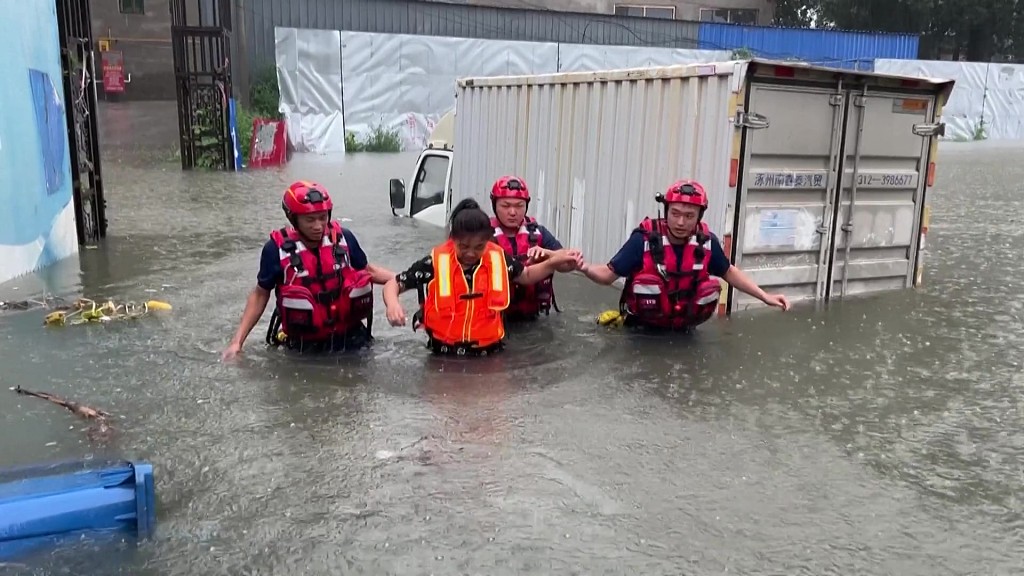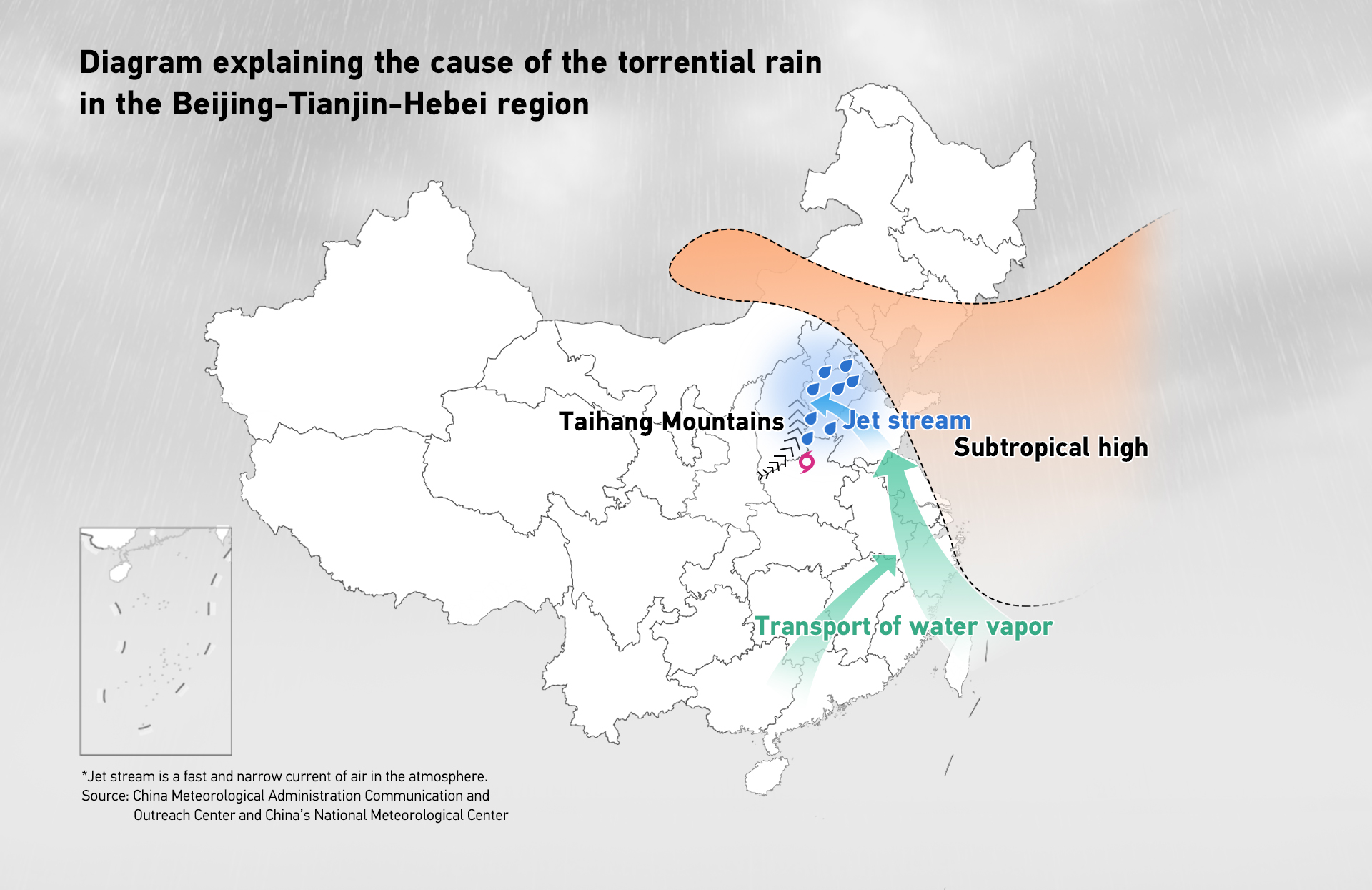A swathe of northern China was put under alert on July 29 as Typhoon Doksuri swept inland, bringing strong winds and heavy rain and causing flooding.
Beijing as well as Hebei, Tianjin and eastern Shanxi have been badly affected by the typhoon. As of 6 a.m. on Tuesday, 11 people were killed and 27 others are missing, and a total of 127,000 people were relocated in Beijing due to continuous heavy rain. Nine people were killed and six others are missing in Hebei Province, according to local authorities. Tens of thousands of people have also been relocated in Hebei and Tianjin in recent days.
So far, the extreme rainfall in these areas has eased. The remnants of Doksuri will continue to move north, bringing rain to Inner Mongolia Autonomous Region and northeast China.

Firemen rescued a woman who was trapped in the truck in Zhuozhou City, north China's Hebei Province, July 30, 2023. /CFP
Firemen rescued a woman who was trapped in the truck in Zhuozhou City, north China's Hebei Province, July 30, 2023. /CFP
Typhoon Doksuri made its landfall in east China's Fujian Province on July 28 before weakening to a tropical cyclone later that night. Why did its remnants still hit the Beijing-Tianjin-Hebei region in northern China, relatively far from its landing site, even though it had weakened?
According to Fang Chong, chief forecaster of the China Meteorological Administration, the typhoon carrying a lot of water vapor encountered the subtropical high to the east, and the strong air pressure difference between the two caused the east and southeast winds in the Beijing-Tianjin-Hebei region to strengthen significantly. The strong winds transport more water vapor from another typhoon Khanun in the Western Pacific. Eventually, a large amount of water vapor, blocked by the Taihang Mountains in the west, concentrated in the region, resulting in the extreme rainfall.

Diagram explaining the cause of the torrential rain in the Beijing-Tianjin-Hebei region. /Designed by CGTN's Yin Yating
Diagram explaining the cause of the torrential rain in the Beijing-Tianjin-Hebei region. /Designed by CGTN's Yin Yating
However, this is not the first time a typhoon has moved north.
Between 2013 and 2022, there were a number of typhoons moving north such as Lekima, Rumbia and Capricorn, which all landed on the coast of east China and moved all the way north, causing heavy damage to many places.
Typhoons moving northward usually last longer, affect a wider area and cause more disasters, according to Weather China, the China Meteorological Administration's online weather service.
(If you want to contribute and have specific expertise, please contact us at nature@cgtn.com.)